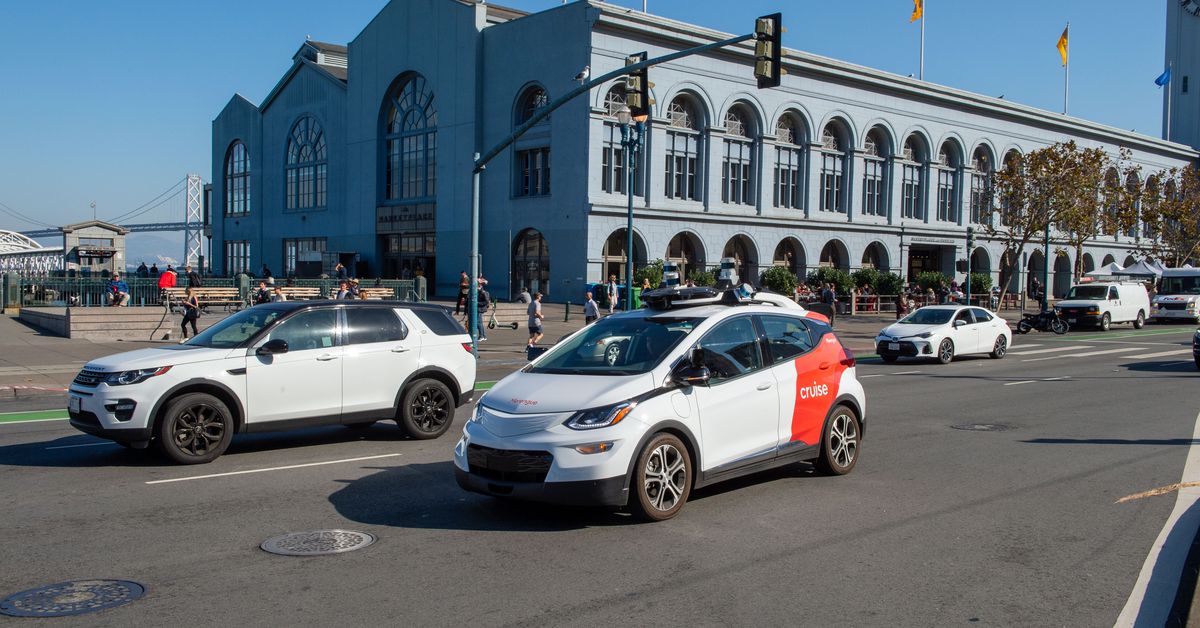
For years, we’ve been told that electric autonomous taxis can help fight climate change by reducing air pollution. But new research from Harvard Law School suggests these supposedly “zero emissions” vehicles could actually exacerbate many of the problems we are facing today.
A new study led by Ashley Nunes, a fellow at the Labor and Worklife Program at Harvard Law School, concluded that fleets of electric autonomous taxis could “dramatically increase energy consumption and emissions that contribute to climate change — not reduce them.”
“While electric vehicles themselves have lower emissions than traditional gasoline-powered ones, our work shows that deploying electric robocabs en masse on America’s streets could actually increase the number of trips, miles driven, and overall emissions,” Nunes said in a release.
Transportation is one of the main contributors to greenhouse gas emissions, with the most significant share coming from light-duty vehicles, personal cars, vans, trucks, and SUVs. Replacing some of those trips with electric autonomous vehicles operating as part of a ride-hailing fleet could help offset some of those emissions.
But by studying data from San Francisco, Nunes’ team found that “ubiquitous electric robocabs might erase those energy savings” by increasing demand for rides while also decreasing ride-pooling or carpooling, largely due to their public perception as easy, cheap, and eco-friendly. In other words, more people would be using these cars to get around who might not have otherwise have done so, thanks to their availability.
“Our work showed that transportation emissions are likely to rise due to the initiation of car trips that — in the absence of electric robocabs — would not be completed, and an increase in the number of Americans who choose to give up sharing rides in favor of using electric robocabs for single occupant trips,” says Nunes.
The study cast doubt on assertions from the AV industry that the advent of electric autonomous vehicles would be a net positive for the environment. Kyle Vogt, co-founder, president, and chief technology officer at Cruise, said as much during an event hosted by the National Federation of the Blind back in 2019.
“I know AVs will change the way we live and move: they’ll save lives, improve accessibility, reduce emissions and air pollution, and give people back the most important resources: their time and their freedom to go where they want to go when they want to go,” Vogt said, according to the transcript.
Cruise often touts its commitment to an all-electric fleet — the company only uses battery-powered Chevy Bolts provided by its financial backer, General Motors — as a key factor that distinguishes it from other AV operators. Most other self-driving car companies use a mix of gas-powered, hybrid, and electric vehicles to comprise their fleets.
The media has also helped push the idea that electric robotaxis would counteract the effects of climate change, with overly speculative headlines like “How self-driving cars could reduce emissions, eliminate parking spots, and add $1.3 trillion to the US economy” and “Driverless cars could be a solution to climate change — but two major things have to happen.”
Some AV operators are aware of the conundrum that could arise from the spread of electric robotaxis. Cruise, for example, is building a purpose-built autonomous vehicle designed primarily for shared rides. “It’s designed to be comfortable if it’s shared, but if it’s just you, you’ve got so much space in here you can really like stretch out,” Vogt told The Verge in 2019.
Promoting shared rides would go a long way toward improving the climate profile of autonomous vehicles in the future, the Harvard team concluded. Rather than handing out tax breaks to people who buy EVs, policymakers should consider financial incentives or discounts for people willing to carpool.
Electric robotaxis would have to be more than “50 percent cleaner than today’s electric cars to reduce emissions, given their anticipated increase in trips,” they said. Cleaning up the electrical grid by eliminating the use of coal and polluting energy sources is another solution.
Of course, eliminating the need for car trips altogether by promoting the use of mass transit — or for shorter trips, walking and biking — is the best way to reduce an individual’s overall vehicle miles traveled.
Nunes’ study is the latest to poke holes in “zero emissions” claims by the tech and auto industry. A University of Michigan study in 2018 found the shift toward autonomy could raise (rather than reduce) a vehicle’s energy demands. Another research paper looked at the behavior of households that were offered a free chauffeur service for 60 hours over a seven-day period, akin to a ride-hailing service or a future driverless car. The study participants’ vehicle miles traveled rose by about 80 percent.
"electric" - Google News
August 30, 2021 at 10:18PM
https://ift.tt/3mHx5mo
Electric robotaxis may not be the climate solution we were led to believe - The Verge
"electric" - Google News
https://ift.tt/2yk35WT
https://ift.tt/2YsSbsy
Bagikan Berita Ini















0 Response to "Electric robotaxis may not be the climate solution we were led to believe - The Verge"
Post a Comment